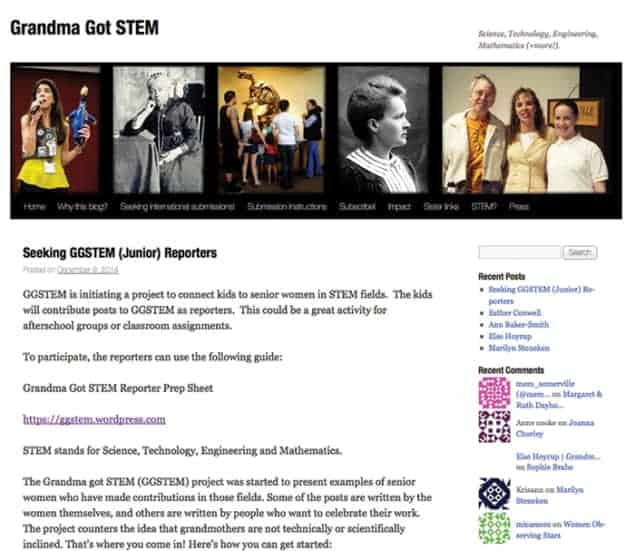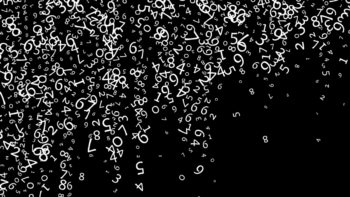
So what is the site about?
Has anyone ever asked you to explain physics “in terms your grandmother would understand”? If so, did you ever stop to think that this might be just a tad unfair on those grandmothers who have, say, several scientific diplomas squirrelled away in their attics, or who started programming computers back when it involved vacuum tubes and punch cards and actual bugs crawling in and shorting out connections, so don’t you come to me complaining about the battery in your smartphone, young lady, I mean, honestly, kids these days, tcha! Grandma Got STEM is a blog that collects and disseminates the stories of women like this, with the goal of inspiring the next generation and countering assumptions about the kinds of people who “get” science and technology.
Who is behind it?
The blog’s founder and editor is Rachel Levy, a mathematician at Harvey Mudd College in California, US. She started Grandma Got STEM after becoming frustrated at the casual (but usually not malicious) ways that older people, especially women, are stereotyped as being unable to understand complex concepts in science, technology, engineering or mathematics (STEM). Most of the blog’s entries are written by other contributors, who are often children, grandchildren or colleagues of scientifically minded women. Occasionally, the “grandmas” themselves contribute first-person accounts of their careers and experiences in science.
Who are some of the women profiled?
There are a few well-known names in the mix, including the physicists Lise Meitner and Maria Goeppert-Mayer and the crystallographers Dorothy Hodgkin and Rosalind Franklin. However, the real strength of Grandma Got STEM is the way it brings recognition to dozens of women who had perfectly ordinary scientific careers – ordinary, that is, except for the fact that they worked in fields that were (and in some cases still are) heavily dominated by men. A good example is an entry written by Gizem Karaali, a mathematician at Pomona College in the US who counts two STEM-savvy women among her forebears. One of them is her mother, Artemis Karaali, a chemical engineer and food scientist who recently retired from Istanbul Technical University. The other is her paternal grandmother, Selma Karaali, who earned a PhD in optics and spent most of her career as a physicist at Ege University in Izmir, Turkey. Karaali describes her grandmother as “the smartest woman I ever met” and recalls spending afternoons working with her on geometry proofs as a schoolgirl. When she took the proofs to class the next day, Karaali recalls, “if there were no volunteers to put the solution on the board for the problem, my teacher would ask: ‘So Gizem, what has your grandmother to contribute to this discussion?'”
Are all of them actually grandmothers?
A few of them aren’t – at least, not in the strict biological sense. One of the other physicists featured in the blog is Elizabeth Rona, a Hungarian-born nuclear scientist who worked with Frédéric and Irène Joliot-Curie in Paris in the 1920s and later on the Manhattan Project in the US. Rona never married and had no children, but the author of her entry on Grandma Got STEM, retired physicist Carl Helrich, remembers her as “a grand old lady of nuclear physics” and an inspiration to him and many other scientists at Oak Ridge National Laboratory, where she spent her later career.
I know a couple of STEM grannies. Can I write about them?
Of course! Grandma Got STEM is a collaborative project and Levy welcomes contributions from anyone with a story to tell about inspiring older women who work, or used to work, in a STEM field. If you like the idea, but can’t think of anyone to interview, check out Levy’s post from December 2014, which includes some tips about selecting interviewees and deciding what questions to ask them. She is particularly keen to get students to become “junior reporters” for the site by interviewing women in their own families or communities (it would make a great class project for almost any age group), and she is also trying to make the blog more geographically diverse, as the “grandmas” featured in it currently hail from only a handful of countries. Finally, it must be noted that there aren’t many physicists yet in Levy’s list of STEM-friendly grandmas. Surely this is a problem that Physics World readers can help solve?



